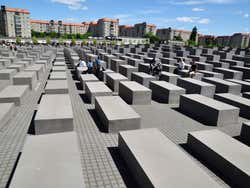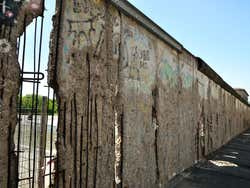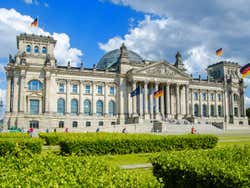
History of Berlin
Learn about the history of Berlin, capital of Germany, from its foundation in the thirteenth century to how it became one of the most important capitals in Europe.
Foundation and Middle Ages
The first mention of Berlin is in 1237. It was founded as a small town mainly populated by hunters, fishermen and merchants. The settlement’s population remained relatively independent from the thirteenth to the fifteenth century.
In 1415, members of the Hohenzollern family that had ruled over Brandenburg, a principality of the Holy Roman Empire, governed Berlin until 1918. At the end of the fifteenth century, Berlin was made the capital of Brandenburg.
During the sixteenth century, Berlin was gravely affected by the Bubonic plague that wiped out 6,000 people.
Protestant Reformation and Prussian Kingdom
The Ninety-Five Theses written by Martin Luther in 1517 that initiated the Protestant Reformation were favorably accepted by a large portion of the German population. This led to a long period of political instability between those in favor and those opposed.
An economic crisis that would last one century and a half would follow the Reformation conflicts. During the sixteenth century, there was a sharp rise in the country’s food prices that impoverished the lesser nobility and favored the bourgeoisie. The prices finally began to fall in the seventeenth century.
The Thirty Years’ War (1618-1648) between several European Protestant and Catholic states devastated a third of Berlin and the population decreased to half.
The city recovered at the end of the seventeenth century and began to prosper during the eighteenth century, becoming one of the most beautiful capital cities in Europe. In 1788, the Brandenburg Gate was designed.
Berlin, Capital of Prussia
Berlin was made the capital of the Kingdom of Prussia by Elector Frederick III.
In 1806, Napoleon marched into Berlin and this led the population to create a nationalist movement. The capital became the hub of the unrest.
In 1871 the German states defeated the French troops in the Franco-Prussian War and the German Empire was founded, and the federal state of Brandenburg was governed once again by Prussia. Berlin became the capital of the new Prussian Empire.
As the capital of the Empire, Berlin grew exponentially, and its population grew from 825,000 in 1871 to nearly 2,000,000 in 1990 and to 4,000,000 in 1925. The city became a worldwide cultural, architectonic and financial reference point and turned into the leading nation in continental Europe.
Meanwhile, France began to rise as a powerful nation due to its empire in Africa and Asia. Both countries were worried about the prospect of another Franco-Prussian War and tried to get as many allies as possible on their sides. Thus, the continent was divided into two hostile alliances with the Triple Entente (France, Russia and Great Britain) on one side and the Triple Alliance (Germany, Italy and Austria-Hungary) on the other. The animosity between both alliances was the greatest factor in the uprising of World War I.
Berlin and World War I
The First World War broke out in 1914 when Archduke Franz Ferdinand of Austria was killed. Consequently, Austria-Hungary gave the Kingdom of Serbia an ultimatum. This set in motion one of the most devastating global wars between the Allies and the Central Powers of Germany and Austria-Hungary.
The Allies defeated Germany and Austria-Hungary in 1918, and the peace was signed on 11 November 1918.
Between 1919 and 1933, the German state was designated Weimar Republic. In 1933, Chancellor Adolf Hitler was given the power to execute laws without the approval of the Reichstag with the Enabling Act, which ended the Weimar Republic. Several years later, World War II broke out.
Berlin and World War II
The 1 September 1939 Germany invaded Poland and the Second World War was declared.
Berlin was demolished at the end of the conflict by the British and American aerial bombings, as well as by the progress of the Russian army.
The Germans surrendered on 8 May 1945. Nine weeks later, the Allies (United Kingdom, United States and the USSR) met at the Potsdam Conference to decide what to do with the defeated Nazi Germany and Austria. The two countries and capitals were divided into four zones. The city was in the administrative area of Berlin.
Berlin Blockade and the Cold War
The World War II Allies approved the Basic Law for the Federal Republic of Germany and on 23 May 1949 West Germany (Federal Republic of Germany) was created.
On 24 June 1948, the USSR prevented the Allies from accessing sectors of the city under Western control. The Berlin Blockade was one of the first crises of the Cold War and lasted a little less than a year, forcing the Allies to supply the city by airlift from Tempelhof. Finally, defeated, the Soviet Union lifted the blockade on 12 May 1949.
The USSR created East Germany (German Democratic Republic) on 7 October 1949.
The Cold War arose from 1947 until 1991 because of the geopolitical tension between the U.S. and the Soviet Union. Both countries initiated an arms race.
During the Cold War, West Germany rejected numerous proposals of unification by Moscow because it was unwilling to give up Upper Silesia, Farther Pomerania and East Prussia.
Iron Curtain and Berlin Wall
The term “Iron Curtain” was first used by Paul Joseph Goebbels, Minister of Propaganda of Nazi Germany, referring to the Soviet Union.
It was then used in 1945 by Churchill in a telegram sent to President Truman stating his concern for the politics of the Soviet Union: “[an] iron curtain is drawn down upon their front.”
The Berlin Wall was built by East Germany in 1961 and divided the city both physically and ideologically until 1989. The Soviet Union argued that it was protecting its population from a possible attack from the West, but in fact, it was a way of controlling mass immigration from East to West Germany.
The Berlin Wall, measuring 144 kilometers, became the symbol of the Gold War.
The fall of the Berlin Wall started on 9 November 1989 and East Germany was forced to open the checkpoints to thousands of East Germans who gathered at the Wall.
German Unity and Berlin
Nearly a year after the fall of the Berlin Wall, on 3 October 1990, the accession of the German Democratic Republic to the Federal Republic of Germany was declared. The capital was moved to Berlin from Bonn.
Once Germany was reunified, West Germany taxpayers had to aid East Germany to develop its economy paying approximately 1.3 trillion euros in twenty years.
Currently, both parts of Germany are growing and have a robust economic development.
In recent years, the city has almost completely transformed. It has large avenues marked with avant-garde buildings, designed by some of the best architects in the world.
Berlin is becoming one of the most influential cities in Europe. It is modern, tolerant, cosmopolitan, young and culturally interesting. It is also the hub of many new European youth movements that are emerging.





